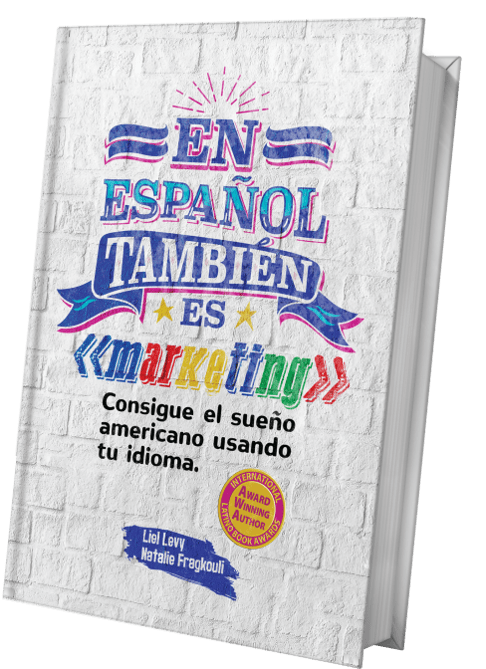Does your law firm need new clients on a regular basis?
No?
Alright, well thanks for stopping by.
For everyone else, one of the easiest ways you can consistently generate new clients for your law firm is by running Google Ads. The long list of advantages includes everything from a predictable budget to the potential for instantaneous scalability.
Success with Google Ads isn’t guaranteed, though. While Google has definitely gone out of their way to make their platform as user-friendly and effective as possible, we’ve seen a lot of law firms fall short with this powerful platform over the years.
So, whether you’ve struggled in the past, are hoping to see better results, or have literally never heard of Google Ads until now, let’s dig into the essentials you must understand to make the most of this incredible tool.
Step 1: Define the Services You Want to Advertise
Advertising always begins with your audience. If you make a misstep when identifying your target market, that’s going to cost you. Even a seemingly small error (e.g. missing their average age by a few years) can have huge consequences because they’ll impact every other facet of your marketing campaign.
For the purposes of your law firm, the audience you want to engage comes down to what kinds of services you offer and where you offer them – what is your practice area?
Hopefully, you’re 100% clear on those. If you don’t know what services you offer, you are a long way from needing Google Ads.
However, knowing your market isn’t enough. To build a successful ad campaign, you’ll need to understand how to use keywords and segmentation to attract these leads. To do that, you need an in-depth understanding of your law firm’s buyer personas.
Who Is Most Likely to Become a Client?
Just about anyone could become one of your clients, but you can’t effectively market to everyone. Instead, you want to focus your law firm’s Google Ads on the kinds of prospects who are most likely to convert into clients.
This is how you increase conversions, skyrocket your ROI, and improve that all-important Google Quality Score.
Again, you probably have a pretty good idea of who your ideal candidate is. You probably know the kind of market you want to engage. For example, many of our clients aim their campaigns at Hispanic prospects who need their legal services.
Whatever the case, you want to take things a step further and create concrete traits that describe your market. By doing this, you’ll effectively build a portfolio of answers for all the important questions you need to ask when designing a successful marketing campaign.
In other words, you need to create accurate buyer personas for your law firm.
Below, we’re going to get into some of the most important ways you have to do this for optimizing your Google Search and Display Ads.
For now, let’s cover some of the basics you must include when creating effective buyer personas for your firm:
- Gender: For most firms, gender is irrelevant, but you might find that your clients tend to be overrepresented by males or females. In that case, it would be worth noting the gender of your ideal prospect.
- Age Range: Do your clients tend to be Millennials? Gen Xers? Baby Boomers? Maybe there’s some overlap. When you understand the age range of your ideal clients, you’ll have a much better idea of how to engage with them.
- Ethnicity: As a marketing agency that specializes in helping law firms attract Hispanic prospects, we know firsthand how important this trait is for success with Google Ads. For example, we’ve learned that understanding the cultural expectations Hispanics have for companies that want their business is central to earning their trust.
- Location: We’re going to go into a lot more detail about this one below because it has so much potential for improving your ads. Sufficed to say, as a local business that has a limited practice area – even if it’s the entire state – you need to be clear about where your ideal prospects live.
- Their Buyer’s Journey: Your law firm’s prospects don’t have the typical buyer’s journey, but you still need to understand the events that will precede them seeing your ad. Obviously, there will be a catalyst event – starting a business, deciding on divorce, getting in a car accident, etc. – but what comes next? What do they search for in Google? What device do they use? What terms are they searching for? We’ll really dive into this in Step 2, so you’ll have lots of information to include for your buyer persona.
Be Realistic About Your Buyer Personas
Of course, it’s important to be realistic where your buyer personas are concerned. Your ideal client might be someone who has millions of dollars to pay you on a regular basis. Who wouldn’t want that kind of client?
But is that realistic?
Likewise, your practice area may not be big enough to accommodate a sufficient number of your ideal clients. For example, if you practice personal injury law, you might see your highest profit margins from clients who have suffered severe brain traumas. Those might be your ideal clients, but you probably won’t see enough of them every year unless you live in one of the country’s largest metropolitan areas.
So, part of being realistic is knowing that you can’t hope to generate those kinds of leads day-after-day. You’ll need to focus on other buyer personas, too.
Step 2: Identify How Your Ideal Clients Prefer to Search for Lawyers
Most firms are successful when it comes to that first step.
Again, it’s a big one. Your chances of success depend on your ability to define whom you want to target and what services you want to market.
Still, it’s only the first step. Now that you understand your buyer personas and the services they want, you need to identify how they go about searching for those services on Google. Otherwise, all of that information you just compiled in the last step won’t be much use. You won’t be able to put it into action because you won’t show up where your buyer personas are looking.
SEO vs. PPC: Which Is Best for Your Law Firm?
Since the beginning of digital marketing, the debate between SEO and PPC has been raging. Proponents of one can list a million reasons their method is superior and a million more reasons the other should be avoided at all costs.
Of course, there are also those of us who recommend both – at least for law firms. Using SEO for organic traffic can be a great way to earn “free” leads for years to come. However, you pay for those “free leads” upfront and generally need to wait months or even years before you start seeing any returns.
On the other hand, when done right, your PPC campaign can begin generating leads for your law firm right away. We really need to stress “done right” because PPC can be challenging for novices. For those with years of experience, though, a well-designed PPC campaign can produce returns by the very next day.
That being said, there’s a far more important distinction that needs to be made when deciding how to use SEO and PPC to best benefit your term. It’s one that we’ve seen just about every law firm miss before working with us.
The distinction is understanding the timeline a prospect is working with when they’re looking to hire an attorney. Those with longer timelines will be best targeted through SEO. Those who want to speak with an attorney right away should be targeted with PPC. If you choose the wrong method, the prospects you’re targeting will never become your clients.
Let’s look at some examples to illustrate this.
If someone needs a lawyer on retainer for their business, they have a long timeline. For one thing, they probably want to educate themselves on the type of attorney their business needs, how much they have to budget, what services come with a retainer arrangement, and more. They’ll earn this education through free blog posts and videos. If your firm offers these kinds of services, you’d be wise to create this kind of SEO-focused content, work them through the four stages of your marketing funnel, and prove yourself to be the easy choice when they’re ready to hire.
To be fair, you could still use PPC in this situation, but you’d most likely find success by targeting keywords related to common questions (e.g. “How much does a small business attorney charge?”) and then offering free eBooks or case studies from your landing page. Nonetheless, you’d still want to build out an SEO-focused funnel for attracting organic traffic.
Now, imagine taking this kind of approach with a prospect who wants to sue their doctor for malpractice.
Do you think that type of prospect wants to spend weeks or even months researching their options?
Do you think they’re interested in learning more about malpractice first?
Do you think they want to read an eBook?
Of course not!
They want to speak to you right away! They want peace-of-mind knowing they’ve consulted an expert who has answered their questions and helped them better understand their options.
Yet, countless law firms all over the country publish regular blog posts on topics like malpractice, personal injury, criminal charges, and others that prospects don’t want to read because they don’t have the time. They want help this very moment!
We’re not saying that keyword-optimized pages are a bad idea. Optimized pages that describe your services could earn you some free traffic, but they’re also essential for explaining to prospects what it is you do and how you can help them.
It’s just that you have to understand your market’s timeline. If yours is a short one, they don’t have the time – or probably the patience – to read page-after-page of content. They want to speak with you immediately, so a text ad with proper ad extensions that sends them to a relevant landing page is ideal.
How to Identify the Right Keywords for Your Law Firm’s Google Ads Campaign
Keywords are another factor that seems simple but can easily cause unnecessary challenges. For example, if you’re a personal injury attorney, you probably know that “personal injury attorney” is one of your keywords (just be sure to add your practice area in there).
But what else?
We see a lot of law firms target the kinds of questions they know prospects are likely to ask.
“Do I need a personal injury lawyer?”
“Is it worth hiring a personal injury lawyer?”
“How long does a personal injury lawsuit take?”
The problem is that these searches don’t sound like they’re being done by someone who is urgently looking to speak to an attorney, do they?
It sounds like they might next week or next month…maybe. But it doesn’t sound like they’re hoping to speak within the hour, does it?
Again, these are the kinds of keywords we see a lot of firms target with blog posts. Unfortunately, the people who read these posts rarely become clients. It doesn’t help that many of these queries aren’t state-specific, so your blog could rank at the very top of Google and you still wouldn’t see a great ROI because most of the people who read it reside outside of your practice area.
If you’re looking to simply create a fantastic online resource of free legal information that will literally never make you a dime, go right ahead. Those are fantastic queries to target. You’ll get a lot of traffic and I’m sure you’ll make a lot of people happy.
However, on the off chance that you have bills to pay, we highly recommend you prioritize high-intent keywords. You want people in “buying mode” not “education mode.”
Fortunately, you can consider your best options for free thanks to Google Keyword Planner. It shows you how popular a keyword is, how much competition there is for it, and what you should plan on spending whenever you earn a click for it.
We also like to use Google’s Autocomplete feature for keyword ideas. Just start typing relevant keywords into the browser and let Google suggest popular options.
Google Trends is great, too. Whereas Google Keyword Planner shows absolute search volume data, Google Trends shows the relative popularity of search terms. It even eliminates repeated searches from the same person over a short period, so the reported popularity isn’t affected by small groups of people.
At the same time, Google Trends only shows data for truly popular terms. So, if you are after a mass tort niche, you will probably not get much from Google Trends unless there is huge noise around the subject already.
You can also invest in any number of different paid tools for keyword research, but we suggest you start with the free ones above. Get some practice finding the right terms for your firm – those with high buyer intent – and you’ll have a much easier time deciding on a platform to invest in.
Don’t Forget About Your Law Firm’s Negative Keywords
Finally, don’t forget about the keywords your firm doesn’t want to rank for. You can tell Google not to show your ads any time a searcher enters these “negative keywords.”
For example, maybe you practice family law, but you don’t do guardian ad litem. If your ads pop up whenever someone searches for this very common service, you’ll end up paying for clicks that won’t convert. Or, even worse, they’ll contact your firm, take up your intake team’s precious time, and you’ll end up either turning them down or just redirecting them to the local bar or another attorney.
As a result, your conversion rate drops, your ROI follows, and if you are measuring conversions through Google, you are teaching the algorithm to go after the wrong type of conversions in case you consider smart bidding down the road.
Seriously, if you’ve been running Google Ads for your law firm but have been underwhelmed by the results, negative keywords could be all it takes to turn things around. That’s how powerful they are.
Step 3: Enter “Predictability Mode” for Google Display Campaigns
If you’ve made it this far and absorbed everything you’ve read, congrats. You have a very high-level understanding of what it takes to succeed with Google Ads.
Go ahead and pat yourself on the back.
Heck, we’re going to do it, too. We put a lot of work into this.
Still, there’s more you can do to consistently generate leads for your law firm. Specifically, you can invest in Google Display Ads.
The reason we love these so much is that they can put ads in front of prospects who are about to need your services even if they’re not aware of it themselves.
For example, if you help clients when they’re going through divorce, you can target ads at people who are attending couples’ therapy. If you handle personal injury cases, you can use ads to target people who recently went to the emergency room or autobody shop. Criminal defense attorneys can zero in on people who were recently in jail or in a police station.
All of these powerful options are possible thanks to content targeting, which is proven to work best for law firms. You can target users by search behavior (keywords in search queries they completed in Google), locations they have visited (where user searched for those on Google Maps), or specific websites.
You can also target prospects based on their search behavior or just the websites you know your best leads tend to visit.
Best of all, you’re targeting these prospects right before they know they need your services. Literally, the next step they would take is to begin searching for an attorney, except now they won’t need to because of your Google Display Ad campaigns.
Handpicking Spanish Sites for Hispanic Clients
As we just touched on, one great way to get your Google Display Ads in front of your prospects is by placing them on websites they like to visit. We’ve found that this kind of approach is especially effective with Hispanic prospects.
You can use Placement Targeting to advertise on Spanish websites or even specific webpages. Make sure your ad is also written in Spanish and you’ll make a great first impression with Hispanic prospects.
With Google’s Ad Gallery, you can customize your Display Ad or even upload one of your own. The more relevant you make yours to Hispanic prospects who need your help, the better.
Step 4: Drill Down into Your Market with Segmentation
Don’t stop with Display Ads, either. As powerful as they are, you can still take your firm’s Google Ads campaign further.
The secret is segmentation. You want to get as specific as possible with your audience, so every prospect who sees your ad feel as though it was made just for them.
Again, this is why it’s worth the extra time to carefully construct detailed buyer personas.
Pay Close Attention to Geographic Location When Targeting Hispanic Prospects
Arguably the most important way to segment your audience is by getting clear about their geographic location. Instead of cities, focus on zip codes. These tend to be far more representative of a specific demographic.
For example, even in cities with high Hispanic populations, they tend to congregate in distinct neighborhoods.
You can also add in new areas if recent developments have affected a particular area. For example, a natural disaster or large-scale accident at a factory may greatly increase the number of prospects you can market to in your service area. Just choose the right zip code to get in front of these leads, or if you choose to target a broader geographic location, make sure you make bid adjustments by increasing your bid percentage for zip codes with a higher Hispanic concentration.
Other Important Ways to Segment Your Audience
There’s no end to the many ways you can effectively segment your audience. We recommend you revisit your buyer personas regularly to see if you or your team have identified any new distinctions that might be worth making for even better results from your campaigns.
Until then, here are some other ways you can segment your audience to get started:
- Income Level: if you are an estate lawyer and are looking to target individuals who need your help because of their income level, you can choose this as a trait to target.
- Age: You don’t want your ads to be seen by children who can’t become clients (on their own, anyway), so regardless of the type of law you practice, you must use this segmentation option to keep your ads focused on adults.
- Language: Again, this is very relevant when building strategies for Hispanics, as well as campaigns that advertise immigration-related services.
Once you start seeing some results, you may find even greater success with segmenting by device.
For firms we partner with who want more Hispanic prospects, we usually focus our campaigns on mobile devices. Hispanic people are mobile power users, so this is an easy way to improve their results right away.
Step 5: Prepare for the Influx of New Leads
Believe it or not, this can be a problem.
A good problem, sure, but a problem, nonetheless, so it’s something you should prepare for ahead of time.
Fortunately, it’s a good problem that also has an easy solution.
You just need to make sure that you have an intake team available when your ads are running. Otherwise, you may see a bigger increase in missed calls than revenues.
This is especially important for those types of legal services that involve the shorter timelines we mentioned above. For example, if you’re a personal injury or workers comp attorney, the vast majority of your prospects are going to be calling with a sense of urgency. They want to speak with an actual attorney ASAP. If someone doesn’t answer the phone at your firm, they’ll move on to the next one.
For those of you who wish to market to Hispanics, remember that they often have varying work schedules. Many of them work your typical 9-5 jobs, but plenty also work later hours or start early. They can’t necessarily call during standard hours. If you can have someone by the phone outside of 9-5 and, ideally, on the weekends, you’ll speak with a lot more potential clients.
Don’t Wait to Leverage the Power of Google Ads
Google Ads can reach your ideal prospects wherever they are. Whether it’s at the very top of their research results, on their favorite website, or on their phone (but only when they’re physically in the right location), there’s no better way to advertise your legal services.
If you spend the time to master the intricacies of keyword research and segmentation, your Google Ad campaigns will pay you back every week with new prospects who are ready to become clients.
Of course, you could just have us do the work, too.
At Nanato Media, we specialize in creating comprehensive Google Ads campaigns for law firms, especially those who need bilingual experts to target Hispanic clients.
To find out more about the many ways we can help your firm, contact us today.



